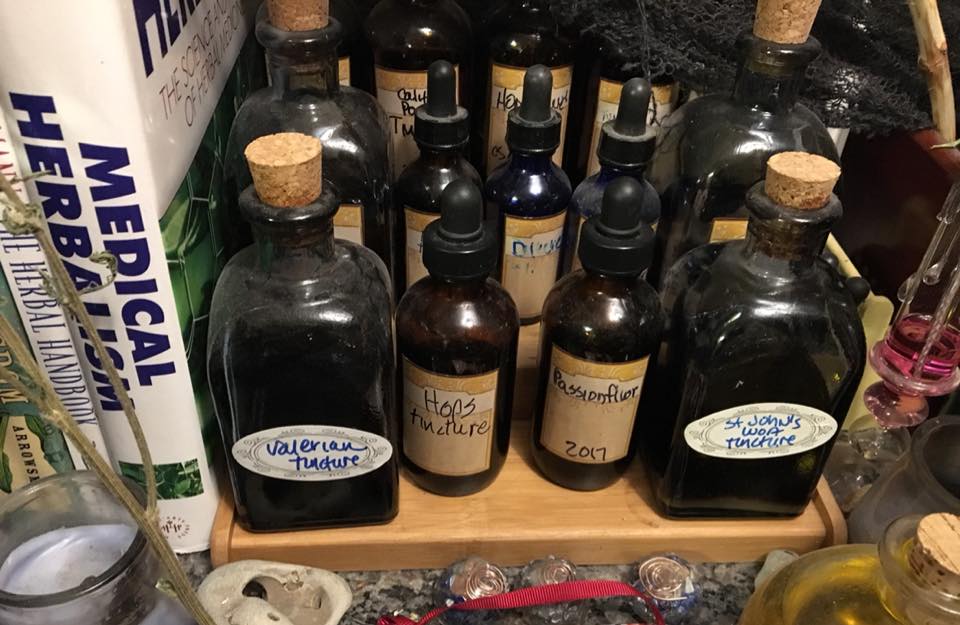Grain alcohol is a favorite among herbalists for tincturing both fresh and dried herbs. However, the way in which we utilize grain alcohol is different for each type. Below is a worksheet with formulas you can copy into a spreadsheet of your own and if you name each cell referenced with the same names that I used, then you should be able to copy them over to your own spreadsheet. I used Excel to create mine. If you’ve never named cells before and using Excel right click on the cell and select Define Name. From there, a box will open where you can enter the name of the cell. Use it in formulas as you would numbers or cell references.
I like to have a section that includes all the base numbers such as weights and the like and that section appears at the top of the worksheet. That way, I can name those cells and reference them in any formula that calls for them. It eliminates redundancy. In fact, ideally, all you should need to do is enter the first two numbers, the fresh and dried weights, and much of the worksheet should fill out on its own. The third number used in calculating the return amount will have to wait until the herb has been pressed from the tincture. The numbers used are arbitrary other than the absolute alcohol amount. That’s .95 because at 195 proof, grain alcohol contains approximately 95% pure alcohol which I convert to .95 for use in one of the formulas.
Tincturing dried herb is simpler because you don’t have to account for the water content of the tincture. Calculating the water content of the plant takes a little time because you have to wait for all of it to dry before weighing it. But at least you know the water content of the plant because it will dilute your final tincture somewhat depending upon how much is there.
In this example, calculating how much initial grain alcohol to use is simple given the 1:2 weight to volume (w/v) ratio I’m using. You simply use twice the amount. So if the herb weighs 500 grams, you’d use 1000 ml of the grain alcohol (500 x 2). Of course, it changes if you’re using a different ratio, but you’d only change the second number, so 1:4 would be 500 x 4 or 2000 ml of alcohol. But for the purposes of this worksheet, I’m using the 1:2 w/v ratio.
A note about calculating the return. This refers to how much tincture you end up with after pressing. I entered that amount (arbitrary for this worksheet) under the Fresh and Dried plant amounts and I named that cell PressedVolume which you’ll find in the return formula.
If you click on the link below the worksheet it will take you to another page where if you click on the worksheet itself, it opens into a larger version of the pdf which can be downloaded if you like. Anyway, here’s what I came up with.
Tincturing Herbs With Grain Alcohol Worksheet
Tincturing Herbs With Grain Alcohol Worksheet
If anyone intends to either quote something I've written, or intends to post any part of my work, including my videos, on any other site, please ask permission before doing so. Any reposting of my work without permission can be considered as copyright infringement, so please ask. And if I give permission, you MUST clearly reference my name as author and my website. No exceptions. The words an author writes are sacred. Unapproved use is not.
Thank you... Jan Erickson

